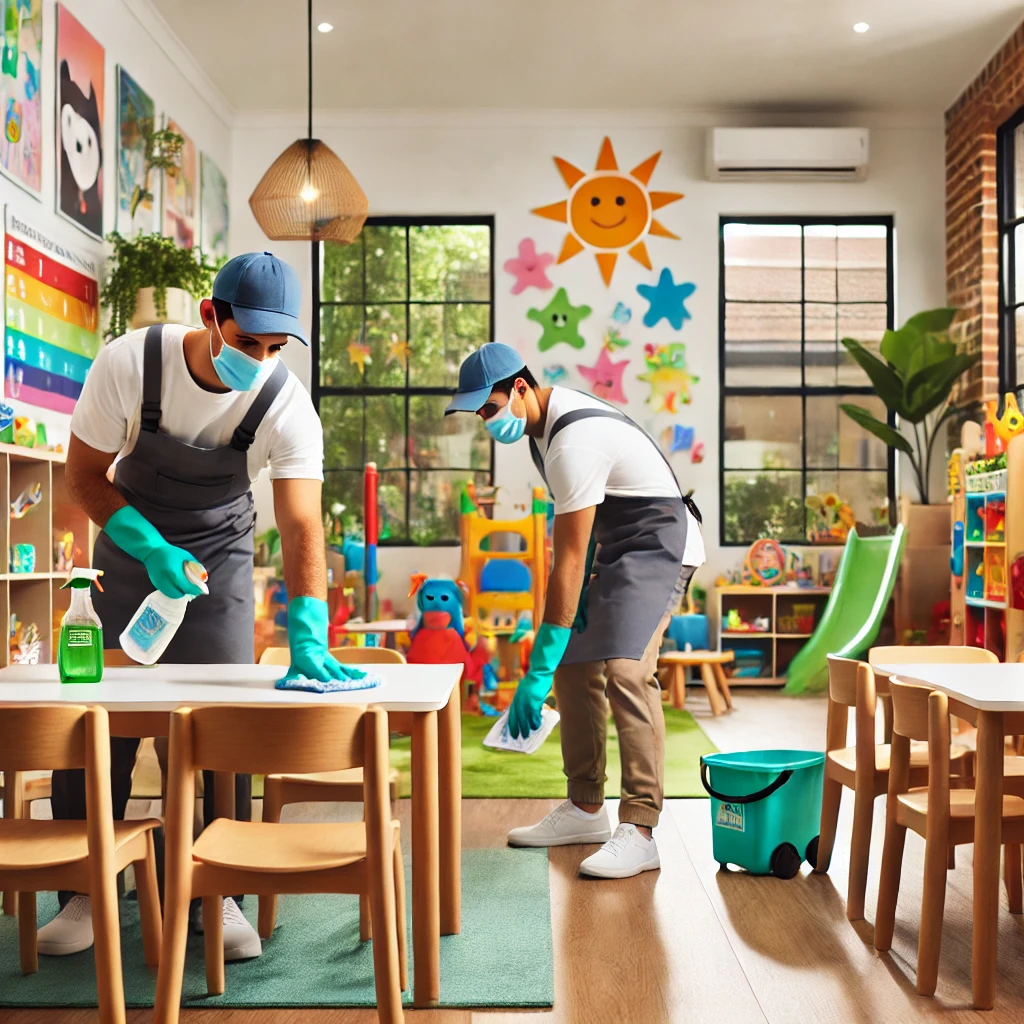Ensuring a clean and safe environment in child care settings is vital. Children are more susceptible to illnesses, and regular cleaning helps reduce germs and allergens that could affect their health. Whether you’re managing a small daycare or a large childcare centre, here are five tips to maintain high hygiene standards, ensuring the safety and well-being of children.
1. Prioritise High-Touch Surfaces
High-touch surfaces like door handles, tables, and toys are hotspots for germs. Wiping them down with disinfectant throughout the day can minimise the spread of bacteria and viruses. Opt for child-safe cleaning products to protect sensitive skin and reduce exposure to harsh chemicals.
2. Set Up a Cleaning Schedule
A structured cleaning routine helps ensure that no area is neglected. Divide the schedule into daily, weekly, and monthly tasks:
- Daily: Sweep floors, sanitise toys, clean washrooms, and disinfect high-touch surfaces.
- Weekly: Deep clean carpets, dust vents, and sanitise lesser-used toys.
- Monthly: Scrub floors thoroughly, sanitise walls, and deep clean storage spaces.
A regular schedule not only keeps the centre clean but also maintains consistency in hygiene standards.
3. Use Safe and Effective Products
Children are more sensitive to cleaning agents than adults. Using eco-friendly, non-toxic products is essential to maintain air quality and prevent allergic reactions. Products containing mild, child-safe ingredients work well for maintaining cleanliness without compromising health. Always check labels to ensure products are safe for use around children, particularly for items like disinfectants and hand sanitisers.
4. Train Staff on Proper Cleaning Procedures
Your cleaning team, as well as caregivers, should be trained on effective cleaning practices. Educate them on areas that require extra attention, like food preparation zones and washrooms. It’s also helpful to train staff on using cleaning products correctly, as improper use can reduce effectiveness and waste resources. When staff know their roles and understand the importance of cleanliness, they are more likely to maintain a higher standard of hygiene.
5. Regularly Inspect and Update Cleaning Practices
Routine inspections help ensure that cleaning standards are met consistently. Use a checklist to review all areas and address any overlooked spots. Periodic reviews of cleaning products and techniques are also helpful as new, safer options often become available. Updating practices when necessary can enhance efficiency and ensure that all cleaning methods are in line with current health guidelines.
Maintaining a clean child care environment in Brisbane is essential for reducing health risks. By prioritising hygiene, using safe products, and training staff, you create a healthier, happier space for children to learn and grow.
For comprehensive guidelines on child care cleaning, see our child care cleaning page.

